Brown Sugar Benefits: 3 Essential Health Perks
A healthier alternative to regular sugar to ease constipation, menstrual cramps, and more

Image: Shutterstock
Brown sugar is a popular natural sweetener made from sugarcane. Its brown color is due to the presence of molasses. The benefits of brown sugar are linked to its molasses content. This sugar is often used in the baking process and is rich in vitamins and minerals. It is available in both refined and unrefined forms. It can help relieve menstrual cramps, prevent constipation, and act as a natural skin exfoliator. Keeping all this in mind, being a sugar, is brown sugar healthy? This article explores brown sugar varieties, nutrition, health benefits, preparation method, recipes, and possible side effects. Keep reading.
 Know Your Ingredient: Brown Sugar
Know Your Ingredient: Brown SugarWhat Is It?
Brown sugar is a type of sugar that is made by infusing white sugar with molasses.
What Are Its Benefits?
Brown sugar is used to treat constipation and relieve menstrual symptoms and it may even help prevent skin aging.
Who Can Consume It?
It is safe for everyone’s consumption and for topical application.
How Often?
You can consume it daily but in moderation.
Caution
Excess consumption of brown sugar may cause dental problems and people with type 2 diabetes should limit its use.
In This Article
What Is Brown Sugar?
Brown sugar is made by infusing white sugar with molasses — a dark brown liquid obtained from raw sugar during the refining process. It has a caramel-like flavor with a soft, clumpy consistency. Brown sugar often feels wet to the touch due to the moisture present in the molasses. It has many culinary applications and is generally considered a healthier option than white sugar.
 Trivia
TriviaBrown sugar is available in four different types. What are they? How do they differ from one another? Let’s discuss these in the following section.
Key Takeaways
- Brown sugar provides fewer calories and more nutrients than regular sugar.
- Its appearance and color differ depending on the amount of molasses used.
- Brown sugar is also known for its skin benefits, like preventing aging signs.
Types Of Brown Sugar
1. Dark And Light Sugar
The amount of molasses added to refined sugar defines the color of brown sugar.
Light brown sugar has a caramel taste and consists of 3.5% molasses. Similarly, dark brown sugar contains 6.5% molasses and has a deeper taste.
2. Demerara Sugar
This unrefined medium brown sugar is named after the place it originated from — the Demerara region of Guyana, South America. The sugarcane juice is boiled until the water evaporates to reveal the large sugar crystals containing molasses. These crystals are then spun in a centrifuge to remove more moisture.

3. Muscovado Sugar
This is unrefined, very dark brown sugar with a stronger flavor than the other types.
The sugarcane juice is heated and pan-evaporated. It is then pounded to get the final product, which has a sandy, sticky texture. Muscovado brown sugar retains all the natural minerals of sugarcane.
4. Turbinado Sugar
Turbinado sugar is also known as “raw sugar”. It is partially refined and has a caramel-like flavor and brown hue. It contains a small amount of molasses and is made by heat-evaporating sugarcane juice and then crystallizing it.
Does brown sugar provide the essential nutrients that your body needs? Continue reading to know the nutritional profile of brown sugar.
Brown Sugar Nutrition Facts
According to the U.S. Department of Agriculture, one teaspoon (4.6g) of brown sugar contains (1):
| Calories | 17.5 |
| Protein | 0.006g |
| Carbohydrate | 4.51g |
| Sucrose | 4.35g |
| Glucose | 0.062g |
| Fructose | 0.051g |
| Calcium | 3.82g |
| Iron | 0.033 mg |
| Magnesium | 0.414 mg |
| Phosphorus | 0.184 mg |
| Potassium | 6.12 mg |
| Sodium | 1.29 mg |
All these nutrients make brown sugar a healthy and nutritious dietary option with immense health benefits. Check them out below.
Benefits Of Brown Sugar
1. Relieves Menstrual Symptoms

Traditional Chinese medicine uses brown sugar to reduce menstrual cramps. A review published in the Journal of Ethnobiology and Ethnomedicine suggests that brown sugar may alleviate menstrual symptoms and the associated illness. It may also help nourish women from the blood loss during menstruation (2). Besides, brown sugar tea may also help relieve menstrual cramps (3).
Much anecdotal evidence suggests that brown sugar, blended with ginger tea, may eliminate the discomfort caused by painful periods. This sugar is also said to relieve cramps and discomfort during pregnancy.
2. Prevents UVB-Induced Skin Aging
According to a study conducted by the Ehime University Graduate School of Medicine (Japan), applying non-sugar fraction of brown sugar topically may prevent UVB-induced skin aging. Both 1% and 3% non-sugar solutions were found to prevent skin thickening and loss of skin elasticity in rats. The 3% solution also prevented wrinkles and melanin pigmentation besides increasing the diameter and length of skin blood vessels (4). Brown sugar can also be used as a skin exfoliant as its rough texture helps eliminate dirt and dead skin cells from your skin. This is attributed to the presence of alpha-hydroxy acids (a popular peeling agent) in brown cane sugar (5).
Chelsey, a blogger, shared her recipe for coffee brown sugar scrub. She uses the scrub to exfoliate her skin and stimulate blood circulation. In her blog, she says, “I enjoy using brown sugar because I have somewhat sensitive skin and it pairs well with the slightly larger and more abrasive coffee granules (i).”
3. May Help Treat Constipation
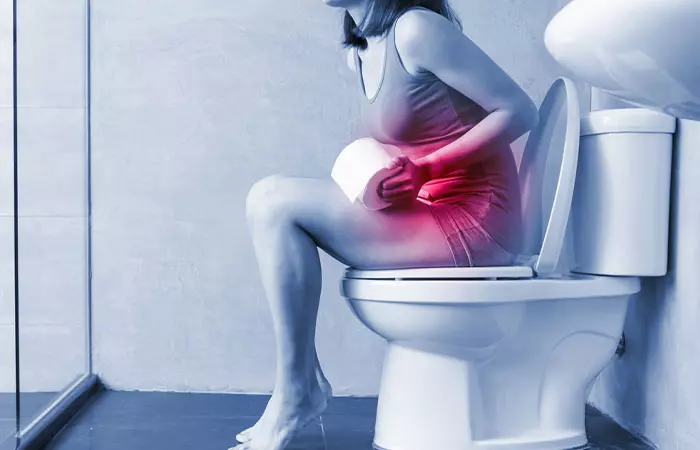
Red sugar (another name for brown sugar in China) may prevent constipation in children and has a similar effect as fig syrup (a drug used to treat constipation). Brown sugar was found to be more effective in reducing anorexia (an eating disorder) and relieving pain during excretion. Moreover, it has not shown any side effects (6).
Anecdotal evidence suggests that consuming boiled water with slices of ginger and brown sugar is extremely helpful in treating the common cold and asthma. Besides, brown sugar is said to be a natural energy booster (for a short period).
You can prepare brown sugar scrubs easily at your home to get glowing skin. Listed below are the two simple and most effective brown sugar scrubs to try.
Brown Sugar Scrubs
1. Brown Sugar And Coconut Oil Scrub
Monolaurin, an acid component of coconut oil, exhibits antimicrobial activity and acts against acne-causing bacteria (7).
What You Need
- Brown sugar: ½ cup
- Unrefined coconut oil: ½ cup
- Any essential oil: 2-3 drops
How To Prepare
- Mix the brown sugar and unrefined coconut oil in a bowl.
- Add your favorite essential oil.
- Apply to your face and scrub in a circular motion for 10 minutes
- Wash off with cold water.
2. Brown Sugar And Olive Oil Scrub
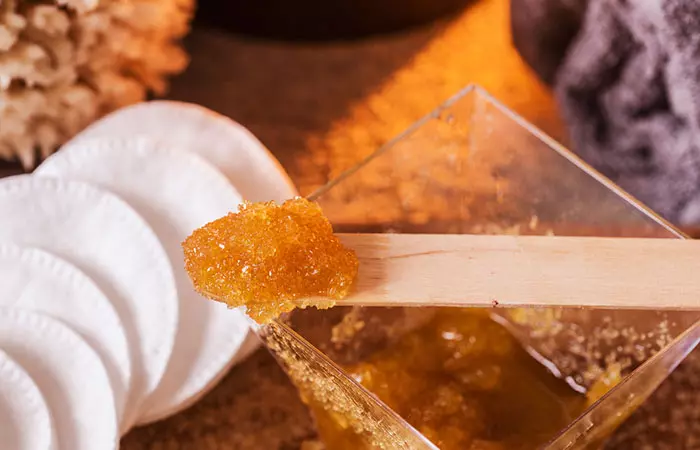
Olive oil exhibits anti-inflammatory and antioxidant properties and may help repair the skin barrier (7).
What You Need
- Brown sugar: ½ cup
- Extra virgin olive oil: 2 tablespoons
How To Prepare
- Mix brown sugar and extra virgin olive oil in a bowl.
- Massage on your face with your fingertips for 10 minutes and wash.
You can also mix honey with brown sugar and apply the mixture to your skin. It offers a soothing effect and is suitable for all skin types.
Excess intake of sugar is considered unhealthy. Is it any different for brown sugar? Let’s discuss this further in the following section.
Side Effects Of Brown Sugar
Consuming brown sugar in moderation is generally considered safe. However, its excess intake may cause dental problems. The American Dental Association (ADA) recommends that people limit their added sugar intake to less than 10 percent of total calories consumed per day (8). Besides, people with type 2 diabetes should watch their brown sugar intake to avoid spikes in their blood glucose levels. They can opt for diabetic-friendly and low glycemic index sweeteners like stevia and dates.
Does the molasses portion of brown sugar make it a healthy alternative to white sugar? Let’s dive deeper into the brown sugar vs. white sugar debate below to know more!
Is Brown Sugar A Healthier Alternative To White Sugar?
Brown sugar benefits overall well-being and contains fewer calories. 100g of brown sugar has 380 kcal, while the same amount of white sugar has 401 kcal (1) (9).Brown sugar also has more minerals than white sugar due to the presence of molasses. Molasses provide vitamins and minerals, including potassium, calcium, iron, magnesium, and choline (10). However, brown sugar contains only a small amount of molasses. Moreover, no sweetener can be termed as healthy or better if consumed in large quantities. You are good to go with a sweetener of your choice as long as your consumption remains moderate.
You can prepare brown sugar easily at home with just two ingredients. Here is how.
How To Prepare Brown Sugar
What You Need
- Granulated sugar – 1 cup
- Molasses – 1 tablespoon
Process
- Combine sugar and molasses in a bowl.
- Mix well until sugar turns brown.
- Store in an airtight container to prevent drying out.
Brown sugar has many culinary applications, especially as a baking ingredient. You can use it as a sweetener in cookies, cakes, and brownies. In the next section, we list three easy brown sugar recipes to try at home.
Brown Sugar Recipes To Try
1. Brown Sugar Cookies
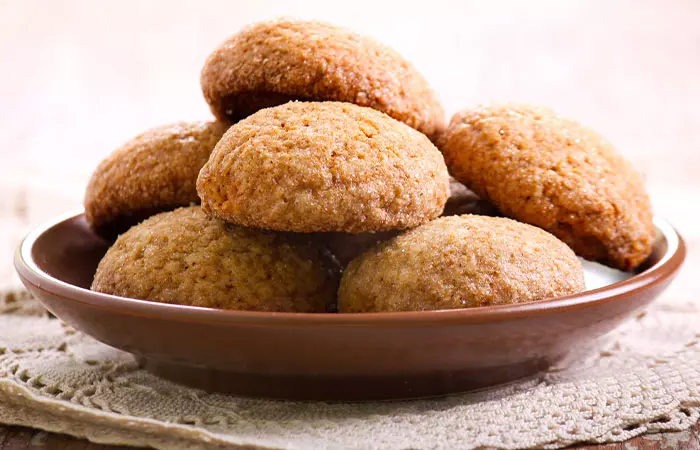
What You Need
- Dark brown sugar – 2 cups
- Flour – 2 cups
- Sugar – ¼ cup
- Unsalted butter – 14 tablespoons
- Baking soda – ½ teaspoon
- Baking powder – ¼ teaspoon
- Salt – ½ teaspoon
- Egg yolk – 1
- Egg – 1
- Vanilla extract – 1 tablespoon
Process
- Preheat the oven to 350°F. Line a baking sheet with parchment paper.
- Melt ten tablespoons of butter over medium-high heat in a skillet. Whisk constantly until the butter starts to turn brown (for about 3-4 minutes).
- Pour into a bowl, add the remaining butter to the same bowl, and set it aside.
- Whisk sugar, ¼ cup brown sugar, flour, baking soda, and baking powder in a separate bowl.
- Add the remaining brown sugar and salt to the butter. Whisk until the mixture turns smooth. Whisk in the egg, egg yolk, and vanilla extract.
- Combine the butter mixture with dry ingredients, stirring until a dough forms.
- Roll the dough either into half-inch thick and use a cookie-cutter or into a ball and place on a cookie sheet. Sprinkle it with sugar.
- Bake for 12-14 minutes or until the cookies begin to set.
2. Brown Sugar Cake
What You Need
- Light brown sugar – 1½ cups
- All-purpose flour – 2¼ cups
- Salt – ½ teaspoon
- Eggs – 4
- Baking powder – ½ teaspoon
- Granulated sugar – ¾ cup
- Butter – 1 cup
- Vanilla extract – 2 teaspoons
- Milk – ¾ cup
Process
- Heat oven to 350°F.
- Grease the bottom and sides of a 12-cup fluted tube cake pan or a 10-inch angel food (tube cake) pan with the shortening. Lightly flour.
- Mix flour, baking powder, and salt in a medium bowl. Set aside.
- Beat the brown sugar, granulated sugar, and softened butter with an electric mixer on low speed for 30 seconds. Scrape the bowl constantly.
- Beat on medium speed for about 5 minutes, scraping the bowl occasionally until the mixture turns light and fluffy.
- Add one egg at a time. Beat well after each addition.
- Add vanilla extract. Beat in the flour mixture alternately with milk on low speed until smooth. Pour into the pan.
- Bake for 60 to 70 minutes or until a toothpick inserted in the center of the cake comes out clean.
- Let it cool for 10 minutes and remove from the pan to the cooling rack.
- Let it cool completely (about 2 hours).
3. Brown Sugar Brownies
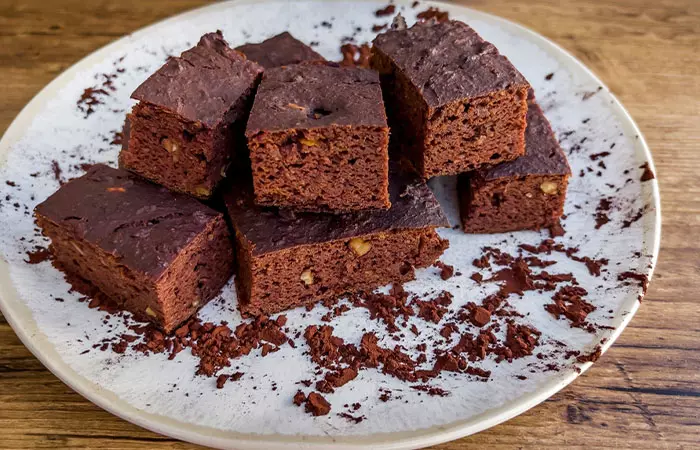
What You Need
- Brown sugar – 1 cup
- All-purpose flour – 1-1/3 cups
- Butter – ½ cup
- Salt – ½ teaspoon
- Baking powder – 1 teaspoon
- Vanilla extract – 1 teaspoon
- Egg – 1
- Chopped walnuts – ½ cup
Process
- Preheat the oven to 350°F.
- Lightly grease a 9 x 9 x 1 ¾ inch pan.
- Sift together the flour, baking powder, and salt. Set aside.
- Beat butter, sugar, egg, and vanilla in a large bowl until the mixture turns smooth.
- Add the flour mixture and nuts.
- Stir well and spread evenly in the pan.
- Bake for 25-30 minutes or until the surface springs back when gently pressed.
- Let it cool slightly. Cut into bars with a sharp knife while still warm.
 Quick Tip
Quick TipHow long does brown sugar last? How to store it to avoid spoilage? Continue reading to know the answers.
How To Store Brown Sugar
Brown sugar lasts two years once you open the package. But you may observe a slight change in the quality, like its taste and texture. It smells off and turns clumpy when it goes bad. It is better to store brown sugar in a cool, moist area in a rustproof container with a tight-fitting lid.
Brown sugar tends to clump together and gets very hard when exposed to air. Storing it in the refrigerator is not recommended. If you want to store brown sugar in a freeze dryer, place it in an airtight bag.
While brown sugar adds a unique flavor to your dishes, it may not be suitable for everyone. However, you can substitute it with the ingredients mentioned in the next section.
Brown Sugar Substitutes
Brown sugar substitutes have gained popularity due to people’s dietary preferences and health concerns. Some of the popular options include:
- Combination Of Molasses And White Sugar: This mix mimics the flavor and texture of brown sugar. This method allows for better control of sweetness and can be particularly useful in baking.
- Coconut Sugar: It has a lower glycemic index compared to traditional brown sugar. It is a good choice for those monitoring their blood sugar levels.
- Artificial Sweeteners: Options like sucralose and stevia provide a calorie-free alternative to brown sugar but may not replicate the exact taste and texture.
Infographic: A Complete Guide To Brown Sugar
Brown sugar is made from sugarcane and is a healthier alternative to refined white sugar. It is rich in vitamins and minerals that may help treat constipation and slow down signs of aging. We have created a comprehensive guide to help you understand the types of brown sugar and its benefits in the infographic below. Scroll down to know more!
Some thing wrong with infographic shortcode. please verify shortcode syntax
Brown sugar is a sweetener made from sugar cane. It is available in different variants that are based on the amount of molasses added. The many benefits of brown sugar can be attributed to its molasses content. The intake of molasses may help relieve menstrual symptoms, prevent UVB-induced skin aging, and help treat constipation. You can make scrubs with brown sugar and other ingredients suitable for all skin types. However, excess consumption of this popular sweetener may cause dental problems. Also, people with type 2 diabetes should check their portions to avoid side effects. Consume brown sugar in moderation to reap its maximum health benefits.
Frequently Asked Questions
Can we consume brown sugar daily?
Yes, you can consume brown sugar daily as a substitute for white sugar. But limit intake of brown sugar to 1 teaspoon per day.
Is honey better than brown sugar?
Yes, honey is better than brown sugar. Honey has vitamin C and manganese that are not present in brown sugar. It also has a low glycemic index compared to brown sugar.
Is brown sugar refined?
Yes, brown sugar is refined.
Is brown sugar fat-free?
Yes, brown sugar is fat-free. One teaspoon of brown sugar has zero grams of fat.
Is brown sugar good for digestion?
Brown sugar may help in digestion. However, there is no quality research in this regard. Mixing it with a glass of warm water and ginger is a remedy many use to improve digestion.
Illustration: Brown Sugar: Health Benefits, Nutrition, Types, And Recipes

Image: Stable Diffusion/StyleCraze Design Team
Discover the amazing benefits of brown sugar! Watch the following video to understand how it can help improve your health, skin, and hair. Check it out!
Personal Experience: Source
StyleCraze's articles are interwoven with authentic personal narratives that provide depth and resonance to our content. Below are the sources of the personal accounts referenced in this article.
i. Coffee Body Scrubhttps://chelsweets.com/vanilla-coffee-sugar-scrub/
References
Articles on StyleCraze are backed by verified information from peer-reviewed and academic research papers, reputed organizations, research institutions, and medical associations to ensure accuracy and relevance. Read our editorial policy to learn more.
- Sugars, brown
https://fdc.nal.usda.gov/fdc-app.html#/food-details/168833/nutrients - A comparison of traditional food and health strategies among Taiwanese and Chinese immigrants in Atlanta, Georgia, USA
https://www.ncbi.nlm.nih.gov/labs/pmc/articles/PMC3846646/ - Dysmenorrhea: a study of affected factors and approaches to relief among female students at a college in southern Taiwan
https://pubmed.ncbi.nlm.nih.gov/23729340/ - Effects of the nonsugar fraction of brown sugar on chronic ultraviolet B irradiation-induced photoaging in melanin-possessing hairless mice
https://pubmed.ncbi.nlm.nih.gov/19050991/ - Randomized clinical efficacy of superficial peeling with 85% lactic acid versus 70% glycolic acid
https://www.ncbi.nlm.nih.gov/labs/pmc/articles/PMC3900339/ - Effect of red sugar on functional constipation in children compared to figs syrup; a randomized controlled trial study
https://www.ncbi.nlm.nih.gov/labs/pmc/articles/PMC6204243/ - Anti-Inflammatory and Skin Barrier Repair Effects of Topical Application of Some Plant Oils
https://www.ncbi.nlm.nih.gov/pmc/articles/PMC5796020/ - What is the appropriate upper limit for added sugars consumption?
https://www.ncbi.nlm.nih.gov/labs/pmc/articles/PMC5916235/ - Sugar, white, granulated or lump
https://fdc.nal.usda.gov/food-details/2710258/nutrients - Molasses
https://fdc.nal.usda.gov/fdc-app.html#/food-details/168820/nutrients
Read full bio of Mayuri Aavula
Read full bio of Sindhu Koganti
Read full bio of Ravi Teja Tadimalla
Read full bio of Aparna Mallampalli





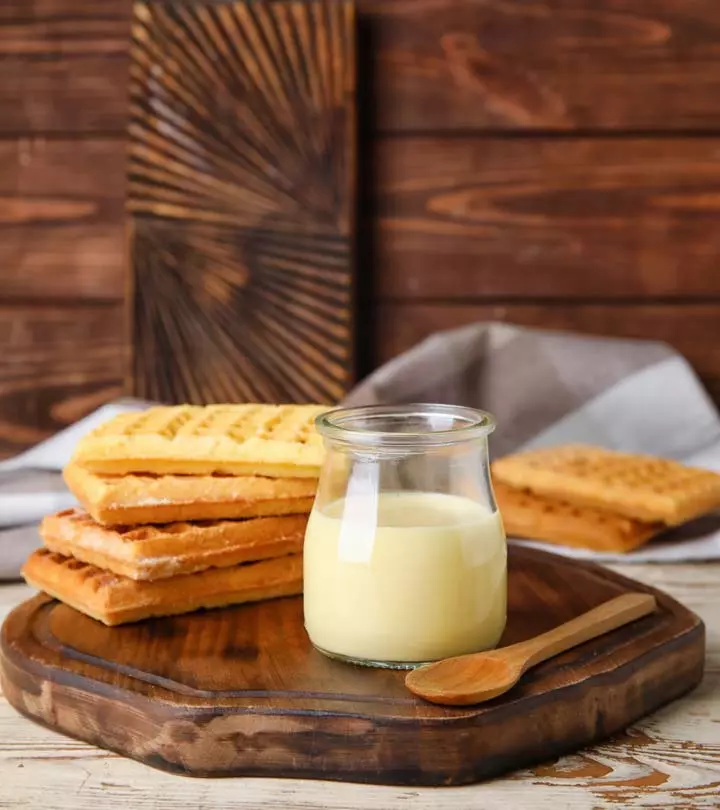
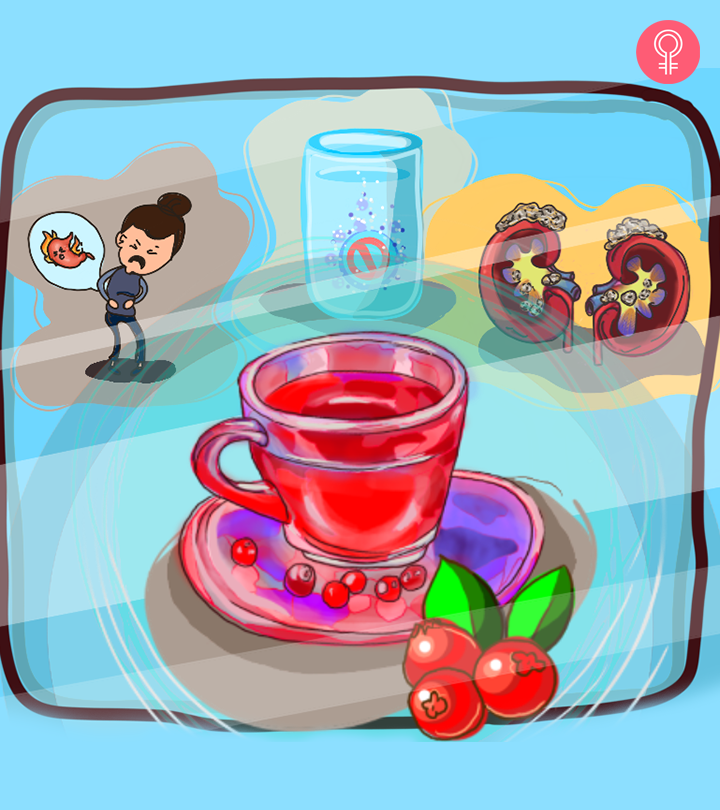
![Medlar Fruit - Benefits, Nutrition Facts, Recipes [Important Winter Fruit] Benefits Of Brown Sugar](https://cdn2.stylecraze.com/wp-content/uploads/2021/11/Medlar-Fruit-Benefits-Everything-You-Need-To-Know.jpg.webp)
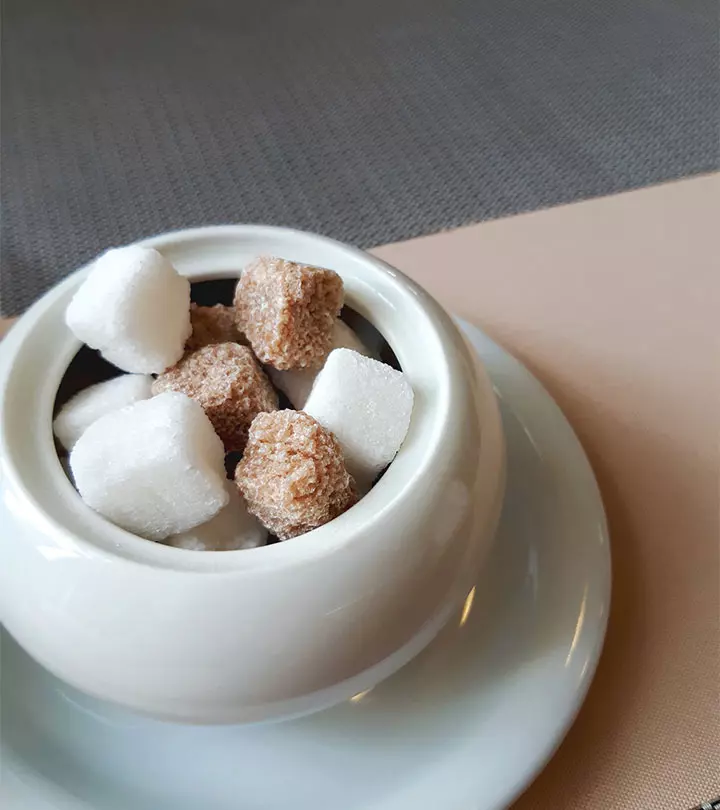
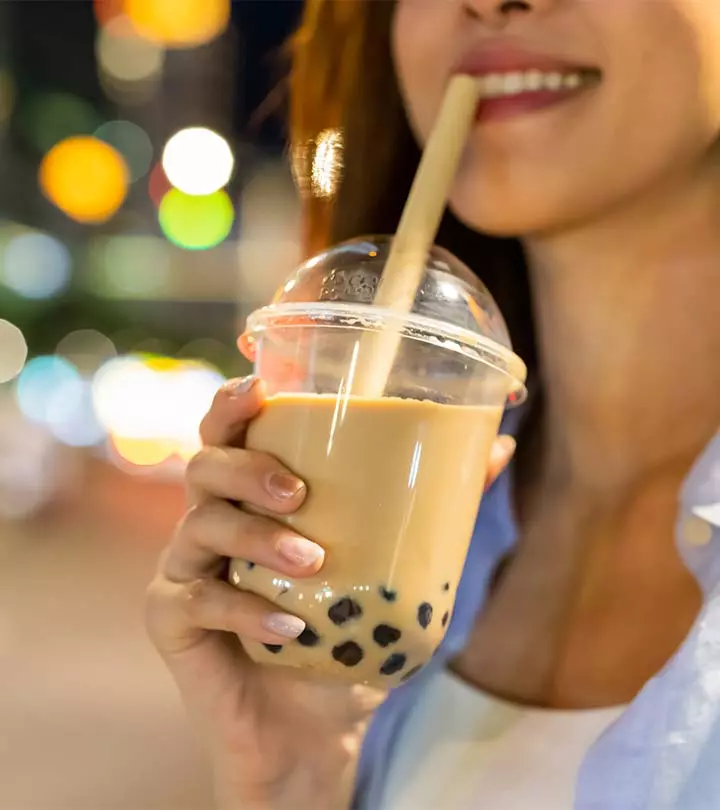
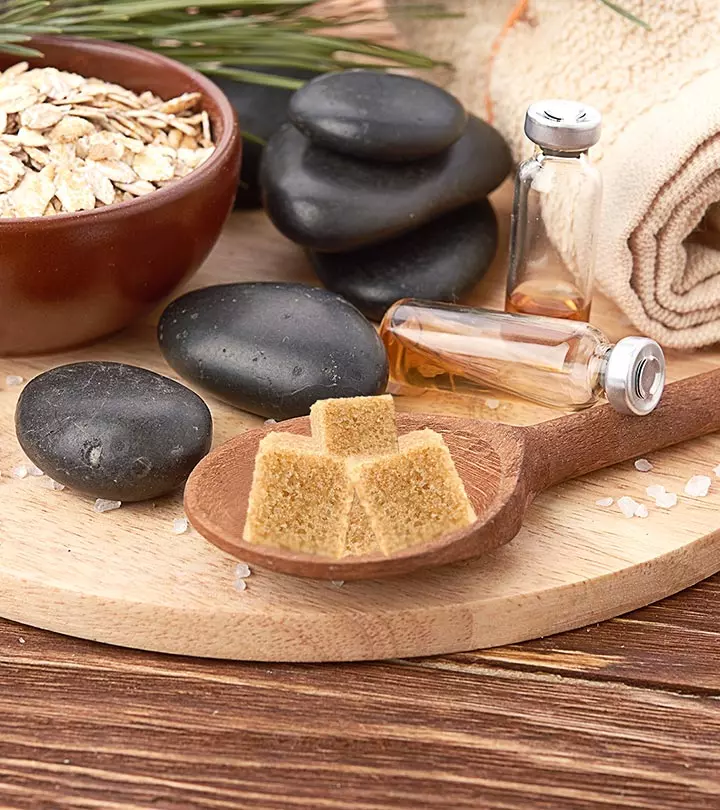

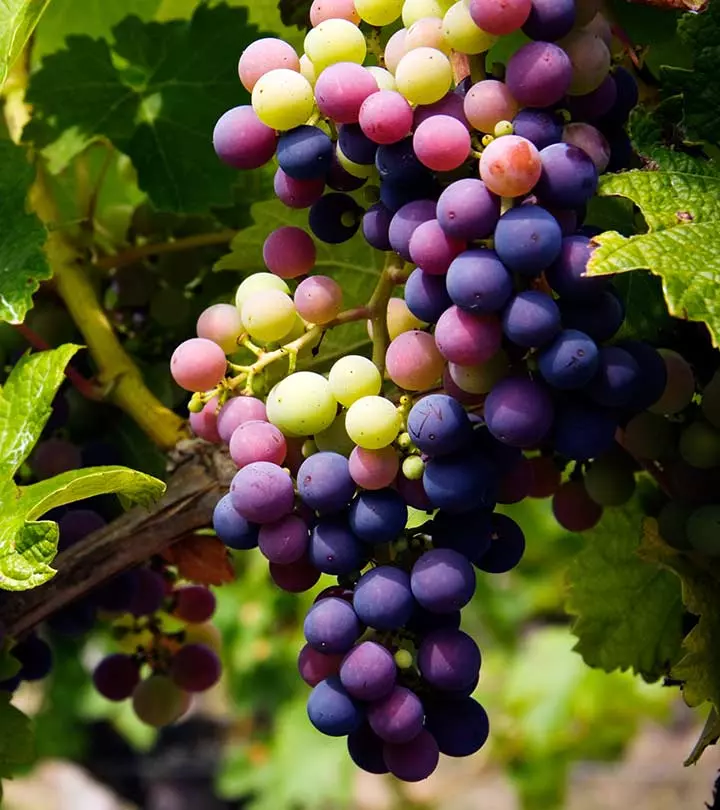
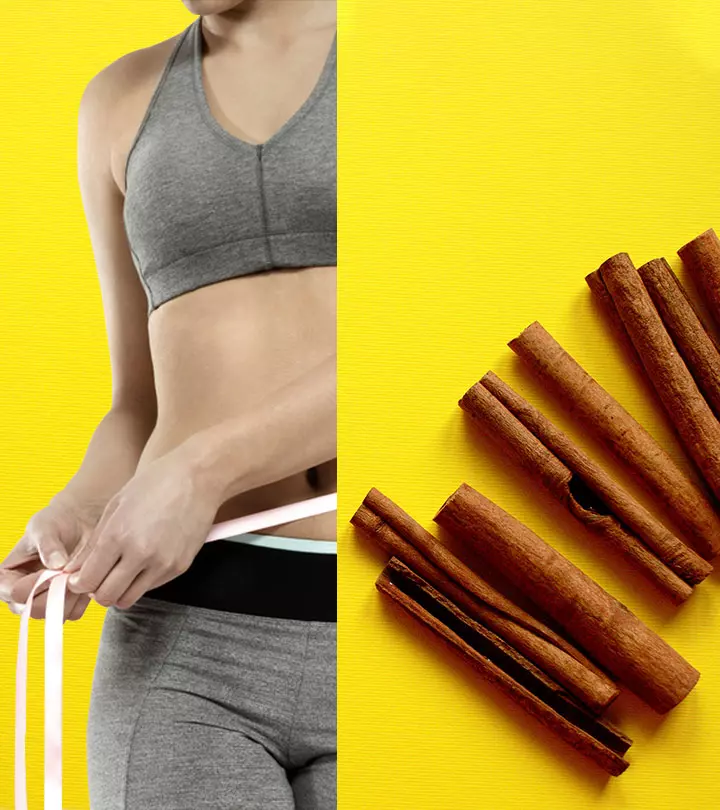

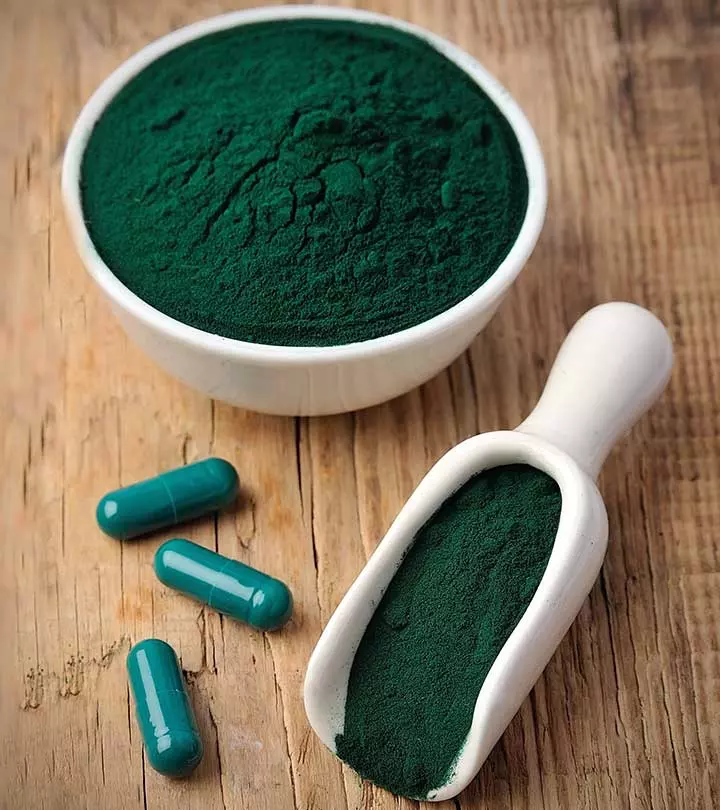
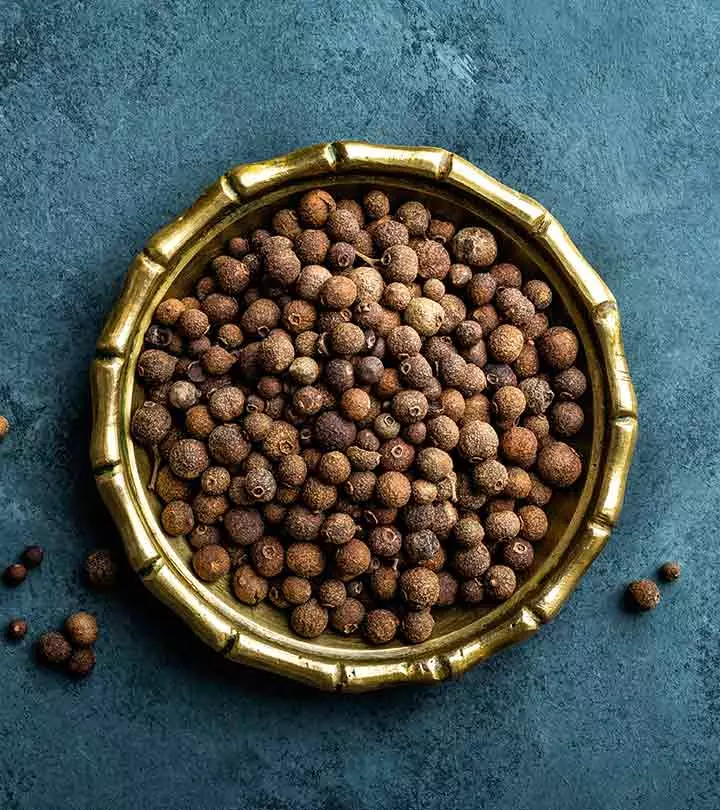
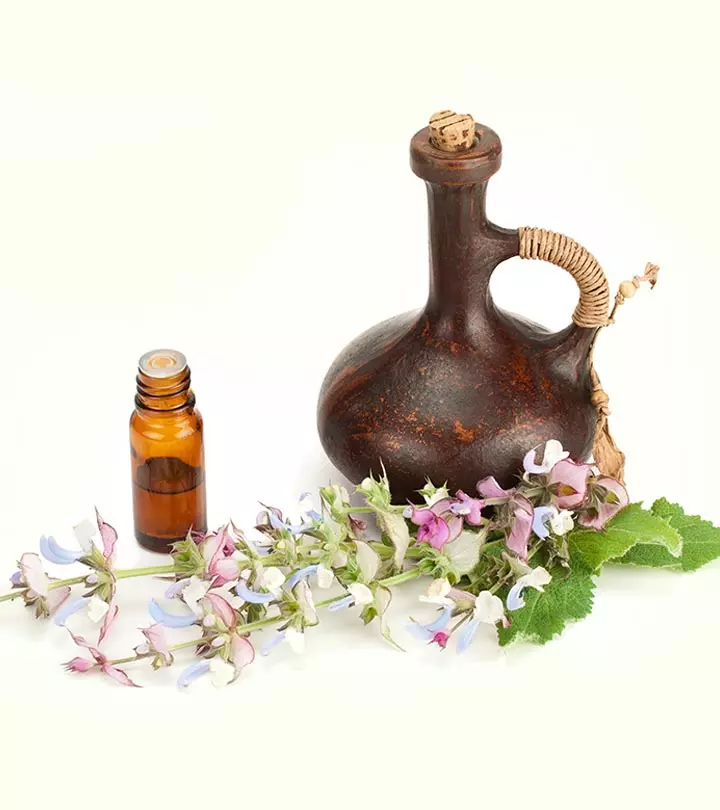

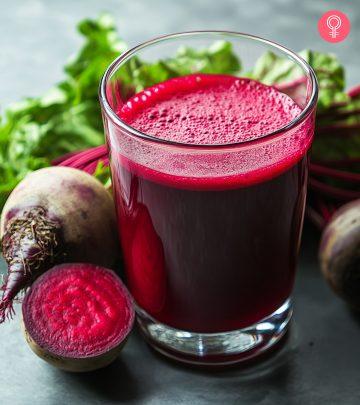
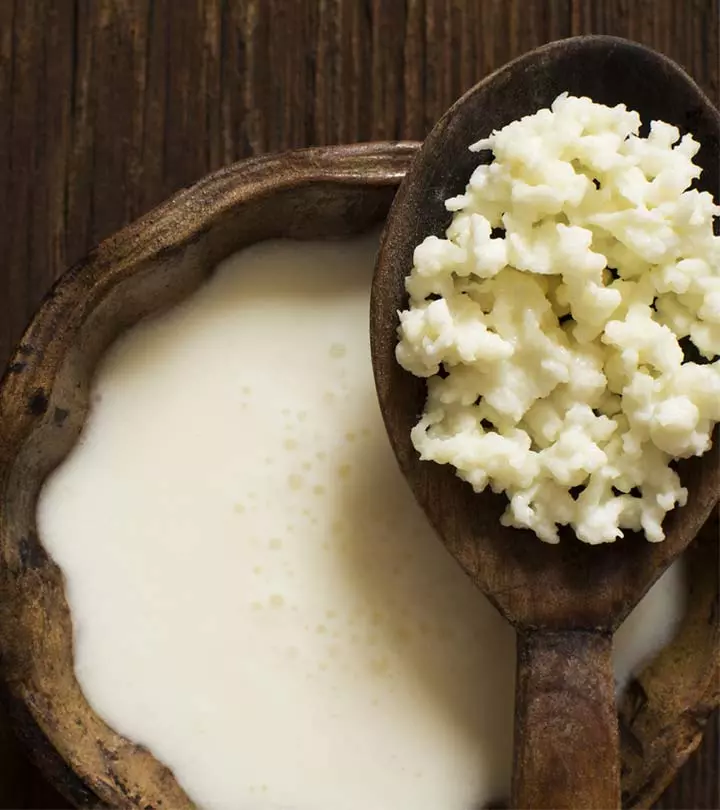

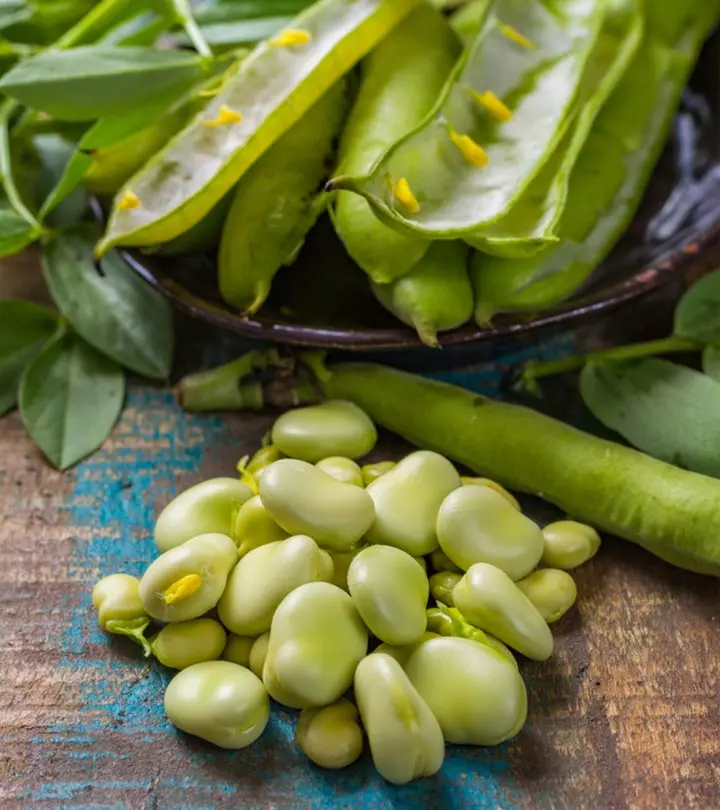
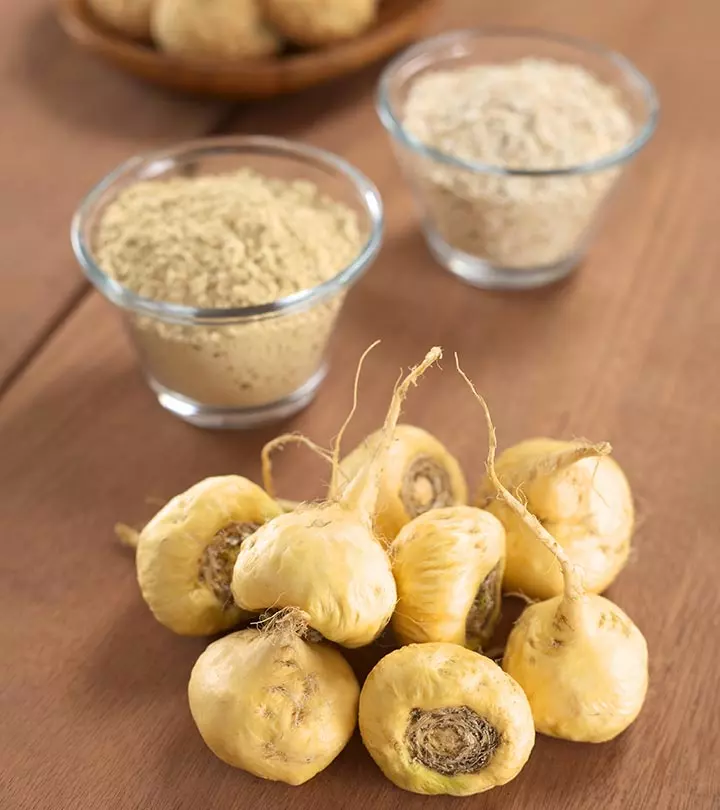


Community Experiences
Join the conversation and become a part of our empowering community! Share your stories, experiences, and insights to connect with other beauty, lifestyle, and health enthusiasts.